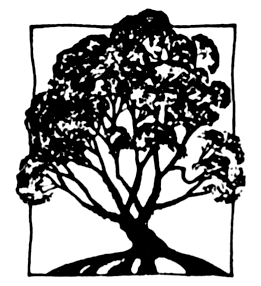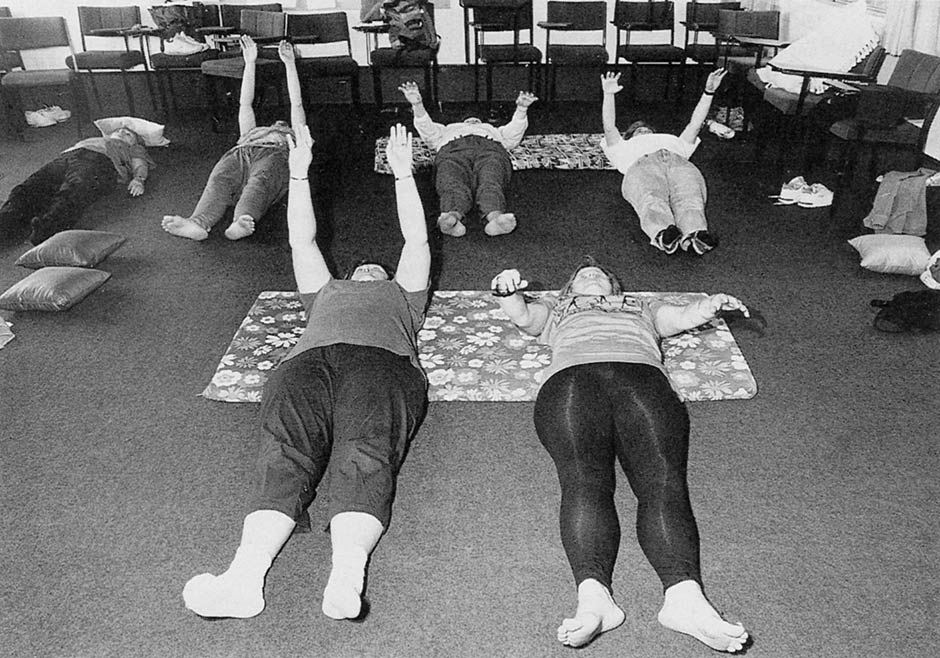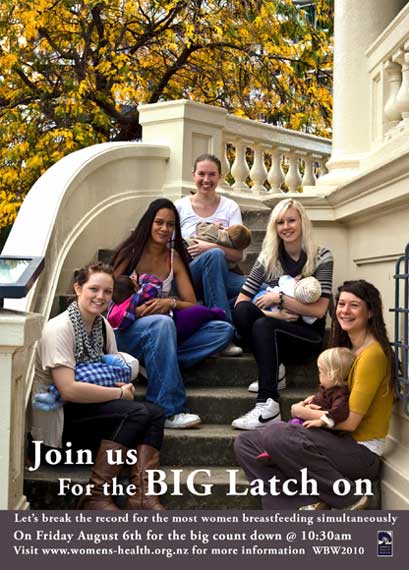
Women's Health Action
1984 –
Theme: Health
Known as:
- Fertility Action
1984 – 1993 - Women's Health Action
1993 –
This essay written by Sandra Coney was first published in Women Together: a History of Women's Organisations in New Zealand in 1993. It was updated by Isis McKay and George Parker in 2018.
1984 – 1993
Fertility Action, originally founded to publicise the dangers of one particular intra-uterine contraceptive device (lUD), the Dalkon Shield, soon developed into one of the most visible and active of the modern women's health consumer advocacy groups. By 1993, instead of having a formal membership structure, it consisted of a small number of active participants, backed up by several hundred newsletter subscribers. Most of the key personnel were educated Pākehā women with a background in women's health activism.
A Wellington branch (initially called the Coalition for Fertility Action), established by Phillida Bunkle, was soon followed by an Auckland branch, formed by Sandra Coney. In the 1970s and early 1980s, both Bunkle and Coney had been active in efforts to have the availability of the injectible contraceptive Depo-Provera restricted. Following widespread media publicity initiated by Bunkle and Coney, hundreds of women contacted Fertility Action about injuries they had suffered through unsafe contraception, and the indifference of the medical system to their plight. A Dalkon Shield Newsletter began to be published in June 1985, and by September 1986, Fertility Action was in contact with 360 women with complaints about the Dalkon Shield, and over 200 with complaints about other IUDs.
Working closely with The Health Alternatives for Women (THAW) in Christchurch, Fertility Action campaigned for a government-led removal programme, to ensure that no women were still using the device, and for a surveillance programme for all IUDs, most of which fell outside legislation designed to control medicines. Although a removal programme did take place, the group encountered a hostile response from the Department of Health. Articulate health consumer advocates were new at the time, and the group had difficulty achieving recognition. This was highlighted in May 1985, when the department held meetings with the manufacturers of the discredited Dalkon Shield, but refused to meet with representatives of Fertility Action. [1]
Eventually 258 claims by injured women were sent to attorneys in the USA. [2] In New Zealand, an IUD Committee, which included a Fertility Action representative, was established in 1986 to monitor IUD safety. After lobbying by Fertility Action, two other IUDs which had been withdrawn from the market in the USA were subsequently withdrawn in New Zealand.
From late 1986 Fertility Action began working on wider issues, including cervical cancer, hysterectomy, hormone replacement therapy, compensation for medical injuries through the accident compensation system, the conduct of the medical disciplinary system, access to medical records, osteoporosis, cosmetic surgery, and changes in the health system. A major initiative concerned what became known as the 'unfortunate experiment' at National Women's Hospital in Auckland. In 1987, Bunkle and Coney published an article exposing a trial at the hospital which had involved withholding treatment from women with abnormal cervical smears. The women had not known they were part of a trial. [3]
This led to the Cervical Cancer Inquiry, which sat in 1987 and 1988. Fertility Action retained legal counsel throughout, representing the interests of consumers, and played a leading role in drawing out the wider ethical issues, such as the conduct of ethical committees, the use of non-consenting patients for teaching, and the lack of institutional protection for patients. The report of the inquiry, released in August 1988, recommended sweeping changes in hospital practices and the conduct of research, and the establishment of a cervical screening programme. [4] Over 130 women who had attended the hospital were recalled for further advice and, if necessary, treatment.
Fertility Action continued to lobby to see that the recommendations of the report were implemented. On each anniversary of the report's release, it issued progress reports. A representative of the group sat on the Expert Group established by the Minister of Health, Helen Clark, to implement a cervical screening programme.

Gill Hanly
Middle-aged women participating in an exercise workshop during the ‘Mid-life Matters’ seminar organised by Fertility Action, Auckland, September 1991.
Fertility Action adopted dual strategies in its work: lobbying to achieve change in the health system to make it more responsive to consumer needs, and assisting women to become more informed health care consumers through support and information. Support and advice for individuals, especially those encountering difficulties with the health system, in turn enabled the group to play a 'watchdog' role, alerting it to issues which should be pursued politically. By 1991 the group's newsletter was widely distributed to groups and individuals interested in women's health. Support groups for women were another strategy for sharing information.
In the late 1980s, with seeding funding from the Department of Health, the group began a Women's Health Information Service, 'run by women, for women', [5] and published a range of fact sheets and leaflets on health topics such as gynaecological conditions, treatments and patients' rights.
In 1988, the Wellington branch closed and the group became exclusively based in Auckland. Funding by a private individual enabled an office to be opened there in 1989, with Lynda Williams employed as co-ordinator, responsible for the day-to-day management of the group's activities. In January 1990 its structure was formalised as a charitable trust, with six trustees. Seminars were held on breast cancer (1990) and mid-life health issues (1991, 1992); courses in the politics of women's health were held in 1989 and 1990. The group also provided speakers to nursing and medical students and members of the public. Women representing it sat as consumer advocates on government and area health board committees.
Because of its political role, Fertility Action had difficulty obtaining funding from public sources, especially in the early years. Subscriptions, donations and a few grants from private trusts provided its income until the late 1980s. The group's participation in the Cervical Cancer Inquiry was funded by public donations; however, the government eventually paid its legal costs. In the early 1990s, the group achieved a better level of funding from government sources, such as the Lottery Grants Board.
Fertility Action's effectiveness was based on thorough research of the most up-to-date information, often from medical sources, and the ability of key members to articulate women's concerns publicly. As the group gained a higher public profile, institutions such as the Department of Health became more ready to take note of its views, enhancing its effectiveness. It played a key role in establishing the Auckland Women's Health Council in 1988, and the Federation of Women's Health Councils of New Zealand/Aotearoa in 1990. Through these contacts, it was able to network widely with other women's groups with similar interests.
Sandra Coney
1994 – 2018
The name change in 1993 from Fertility Action to Women’s Health Action (WHA) reflected the broader issues the organisation was engaged in, and its ‘whole of women’s lives’ focus. After 1993 it continued to advocate for women’s health rights in Aotearoa New Zealand, despite a changing and often challenging political landscape and the diminished energy of the women’s movement.
WHA continued the work of Fertility Action in providing evidenced-based information, advocating for consumer-focused health policy and service delivery, and promoting the significance of gender as a social determinant of health. This included facilitating a Hormone Replacement Therapy (HRT) campaign ensuring that overseas research was available to New Zealand women so they could understand the risks of taking HRT, and widely publicising the risk of blood clots in young women associated with third generation contraceptive pills.
WHA also played a significant role in two further major health service inquiries: the Baby Physiotherapy Inquiry into injuries and deaths among pre-term neonates at National Women’s Hospital (1999); and the Gisborne Inquiry into under-reporting of women’s abnormal cervical smears (2000).
From 2001 WHA contracted to the Ministry of Health. This helped to provide financial sustainability for the organisation, and also steered WHA’s strategic priorities, particularly the focus on supporting and promoting breastfeeding. This included beginning the Big Latch On in 2005, which has since become an international event.

Promoting breastfeeding was a focus of Women's Health Action in the early 2000s. This poster is for the organisation’s event called the 'Big Latch On', timed for the annual world breastfeeding week, where people come together to breastfeed and offer support. The ‘Big Latch On’ went on to become an international event. In 2018, 778 events took place in 28 countries, involving almost 60,000 people.
The 2000s also saw WHA address a wide range of new issues, including direct to consumer advertising, the regulation of assisted reproductive technologies, and the efficacy of the breast cancer drug Herceptin. It monitored the introduction and use of RU-486 (mifepristone, used for medical abortion), and more recently Gardasil (a vaccine against sexually transmitted strains of human papillomavirus), surgical mesh, and Jadelle (a contraceptive implant), as well as new evidence about the effects of Primodos (a hormone-based pregnancy test used in the 1960s and 1970s).
WHA continued to advocate for access to high quality sexual and reproductive health care, specifically abortion and maternity care, provide education on holistic menopause management, and advise on cervical cancer screening. It also continued to ensure that the legacy of the Cartwright Inquiry was not forgotten and that health consumer rights were upheld in health service delivery.
In 2012 it took over the body image health promotion programme from the Eating Difficulties Education Network (EDEN). The programme facilitated peer to peer youth development body image programmes in schools, and offered Nourish professional development programmes for people working with young people.
The biennial WHA Women’s Health Rights Award for contributions to women’s health was inaugurated in 2014, with recipients being given a pohutukawa brooch by jeweller Lisa West. The award went to Helen Clark in 2014, and to Louise Nicholas in 2016. In 2018 Dame Margaret Sparrow received it.
The issues that spurred the founding of WHA remained strongly relevant in 2018, and the promotion of women’s health and wellbeing remained at the heart of its work.
Isis McKay and George Parker
Notes
[1] See Bunkle, Phillida and Sandra Coney, ‘Departmental Dynamite’, Broadsheet, No. 131, July/August 1985, pp. 32–36.
[2] Payouts to the women began in 1991.
[3] See Bunkle and Coney, 1987.
[4] See Committee of Inquiry Report, 1988.
[5] Fertility Action, Women’s Health Information Service brochure, 1991.
Unpublished sources
CEDAW NGO Perspectives, Women’s Health Action, Revised Briefing Paper, Appendix 2, Pacific Women’s Watch NZ CEDAW NGO Report, September 2011
Fertility Action records, 1984–1992, Fertility Action office, Auckland
WHA, ‘A Case for a National Women’s Health Strategy in Aotearoa New Zealand’, WHA, Auckland, 2014
WHA, ‘Creating Health Strategies for Older Women’, Issues Paper, WHA, Auckland, 2015
WHA, ‘Maintaining momentum towards a New Zealand health care system with the principles of the Cartwright Report at its foundation’, Cartwright Comes of Age? Seminar Report, Auckland, March 2010
WHA, ‘Gender equity & health sector reforms’, Women’s Health Watch, June 2006
WHA, ‘Registering foetuses on the National Identity System: implications for reproductive rights’, Women’s Health Action Reproductive Rights Issues Paper No.1, WHA, Auckland, December 2011
WHA, ‘Welfare Reform, Women’s Health and Human Rights’, Issues Paper, WHA, Auckland, 2011
WHA, ‘Women and Alcohol in Aotearoa New Zealand – Literature Review’, Alcohol Healthwatch and WHA, Auckland, 2013
Published sources
Bunkle, Phillida, ‘Dalkon Shield Disaster’, Broadsheet, No. 122, September 1984, pp. 18–36
Bunkle, Phillida, Second Opinion, Oxford University Press, Auckland, 1988
Bunkle, Phillida, and Sandra Coney, 'An "Unfortunate Experiment" at National Women's', Metro, June 1987, pp. 46–65
Committee of Inquiry into Allegations Concerning the Treatment of Cervical Cancer at National Women’s Hospital and Into Other Related Matters, The Report of the Cervical Cancer Inquiry, Auckland, 1988, https://www.nsu.govt.nz/health-professionals/national-cervical-screening-programme/legislation/cervical-screening-inquiry-0
Coney, Sandra, 'A Pain in the Womb', Broadsheet, No. 137, March 1986, pp. 14–18
Coney, Sandra, The Unfortunate Experiment: The Full Story Behind the Inquiry into Cervical Cancer Treatment, Penguin, Auckland, 1988
Coney, Sandra (ed.), Unfinished Business: What Happened to the Cartwright Report, Women’s Health Action, Auckland, 1993
Dalkon Shield Newsletter/Fertility Action Newsletter, 1985–1990; Women's Health Watch, 1991–1992
Parker, Christy, ‘One for the girls? Cervical cancer prevention and the introduction of the HPV vaccine in Aotearoa New Zealand’, Women’s Studies Journal, Vol. 24 No. 2, December 2010, pp. 25–39.

Community contributions